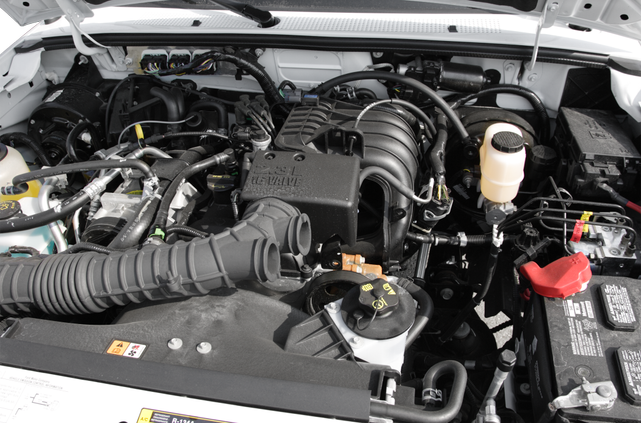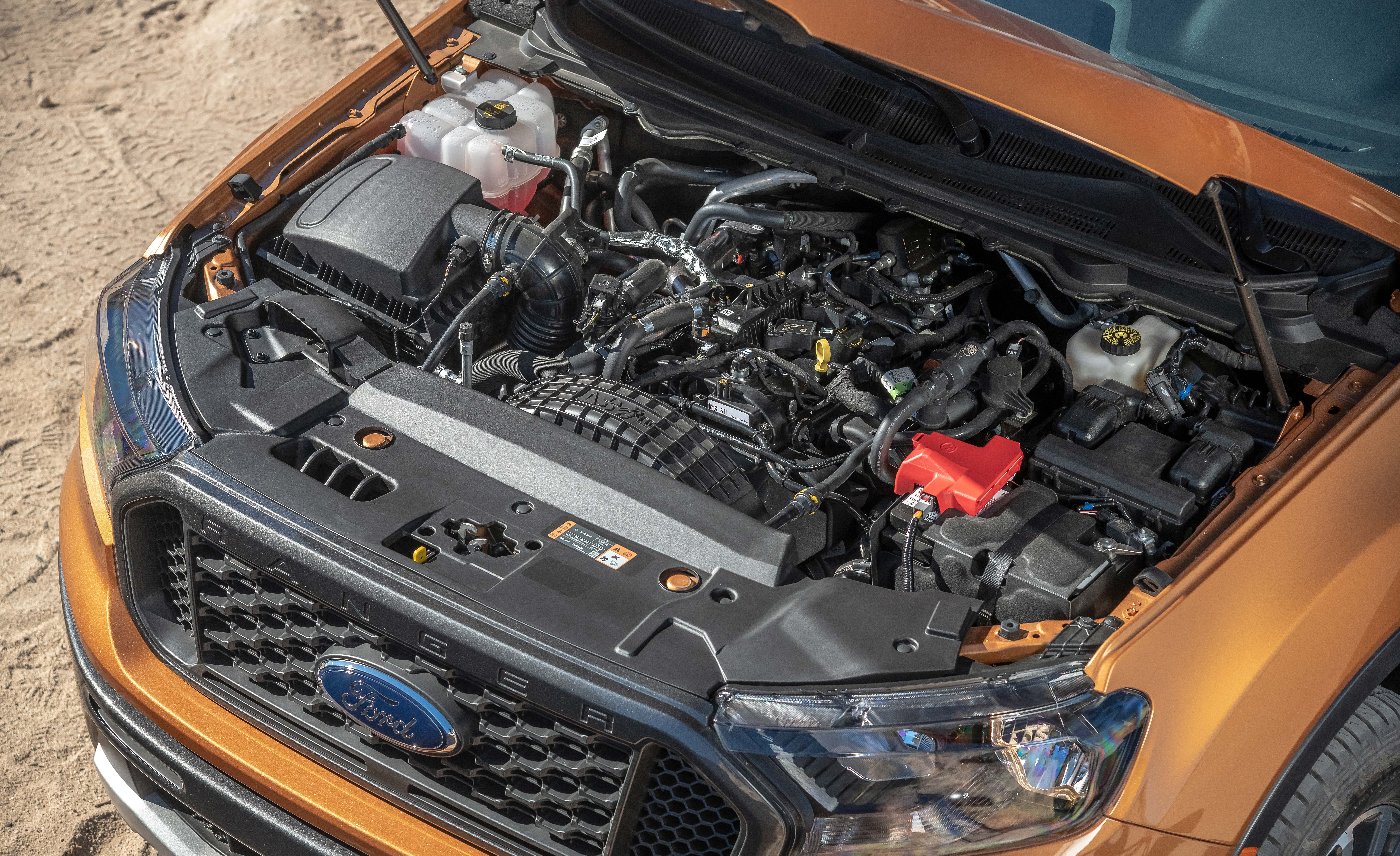Top Benefits of Choosing the 2.2 Ford Ranger Engine for Your Next Pickup
Top Benefits of Choosing the 2.2 Ford Ranger Engine for Your Next Pickup
Blog Article
Recognizing the Essentials of Vehicle Engines: Functions, types, and functions

Introduction of Automobile Engines
A car engine functions as the heart of a vehicle, converting fuel into mechanical power to move it forward. This detailed system consists of different parts that operate in unison to ensure optimum performance and effectiveness. The essential procedure of a cars and truck engine includes the interior burning process, wherein gas and air are combined, stired up, and eliminated to create power.
The engine's design can considerably influence its efficiency, fuel effectiveness, and discharges. Secret components consist of the cyndrical tube block, pistons, crankshaft, and camshaft, each playing a crucial duty in the engine's general function.
In addition to these parts, engines usually use different systems such as fuel shot, ignition, and cooling down systems to improve performance and durability. Comprehending the fundamental mechanics of car engines is crucial for doing and diagnosing concerns upkeep, ultimately adding to the car's integrity and effectiveness over time.

Sorts Of Car Engines
Automobile engines can be classified into a number of types based upon their layout, gas kind, and operational principles. 2.2 ford ranger engine. The most typical categories include interior combustion engines (ICE), electric engines, and hybrid engines
Internal combustion engines, which can be more divided right into gasoline and diesel engines, run by stiring up a fuel-air blend to produce power. Gas engines are generally lighter and smoother, while diesel engines are a lot more fuel-efficient and deal greater torque.
Electric engines make use of electrical energy stored in batteries to power an electric motor, supplying instantaneous torque and no discharges throughout operation. As modern technology advances, electric automobiles (EVs) are increasingly coming to be popular for their ecological advantages and lower running costs.
Hybrid engines combine elements of both internal combustion and electric engines, allowing for flexible power sources and enhanced gas performance. They can operate in various settings, using either the gasoline engine, the electrical motor, or both at the same time.
Each sort of engine has distinct benefits and downsides, affecting their application in different lorry kinds and market sections, from compact cars and trucks to heavy-duty trucks. Understanding these kinds is necessary for making notified decisions pertaining to automobile option and efficiency assumptions.
Engine Features Clarified
Comprehending engine functions is critical for realizing exactly how cars operate efficiently. At the core of any type of interior combustion engine exists the essential process of converting gas right into mechanical power.
The ignition takes place following, stiring up the mix and producing a rapid development of gases. This pressure drives the piston down during the power stroke, which ultimately converts right into the rotational activity of the crankshaft. The exhaust stroke then removes the invested gases from the chamber, giving way for a brand-new cycle to start.
Along with these primary functions, engines additionally incorporate systems that handle cooling and lubrication, making sure optimum functional temperatures and lowering rubbing in between relocating go to website parts. This complex interplay of features makes it possible for the engine to produce the power needed for vehicle propulsion while preserving effectiveness and dependability. Understanding these features gives valuable insight into the intricacies of auto engineering and improves the capability to identify and address engine-related concerns effectively.
Trick Engine Attributes
Engine style encompasses several key features that considerably influence performance, resilience, and efficiency. Among the most essential elements is the engine arrangement, which includes inline, V-type, and level styles. Each arrangement impacts the engine's equilibrium, power, and size output, therefore influencing general car dynamics.
An additional crucial attribute is the engine variation, referring to the overall quantity of all cylinders. Bigger displacements typically produce more power yet may compromise gas efficiency. Engine materials likewise play a pivotal duty; light-weight and high-strength products, such as aluminum and magnesium alloys, improve efficiency without including extreme weight.
The kind of fuel shot system used-- such as multi-port or direct shot-- impacts burning performance and discharges. Turbocharging and turbo charging are features that improve engine efficiency by compeling added air right into the burning chamber, increasing power outcome without considerably boosting engine dimension.
Finally, the visibility of sophisticated engine administration systems click for source enhances fuel-air mix and ignition timing, contributing to smoother operation and much better fuel economic climate. Jointly, these attributes specify an engine's abilities, setting the foundation for its performance and durability in a competitive vehicle landscape.
Upkeep Tips for Engines
Correct engine upkeep is essential for ensuring ideal efficiency and durability, as disregarding regular treatment can result in substantial concerns down the line. To maintain your engine properly, begin with routine oil adjustments, normally every 3,000 to 7,500 miles, depending upon the kind of oil utilized. Fresh oil lubricates engine components, reducing rubbing and wear.
Furthermore, keeping track of coolant levels is essential to stop overheating. Make certain that the coolant is topped up and is in great condition to keep efficient temperature law. Regularly change and check air and fuel filters, as blocked filters can prevent air flow and gas delivery, endangering engine efficiency.
In addition, focus on spark plugs and ignition systems. Used or damaged ignition system can bring about misfiring and decreased performance. Inspecting the battery terminals and links for rust is additionally important, as a weak battery can influence engine Recommended Site starting.
Verdict
In recap, an extensive understanding of automobile engines includes various kinds, features, and key functions that significantly affect vehicle efficiency. Inner combustion engines, in addition to electric and hybrid alternatives, show diverse systems for energy conversion. 2.2 ford ranger engine. Acknowledging the important features, such as intake and exhaust cycles, alongside critical engine attributes like arrangement and fuel shot systems, furnishes auto proprietors with the expertise required for effective upkeep and procedure, inevitably improving vehicle long life and efficiency
An auto engine offers as the heart of a car, transforming fuel into mechanical power to drive it ahead. The basic operation of a vehicle engine involves the inner combustion process, in which fuel and air are combined, sparked, and removed to create power.
Regularly evaluate and change air and fuel filters, as clogged up filters can hinder air movement and gas delivery, endangering engine performance. - 2.2 ford ranger engine
In recap, a thorough understanding of auto engines incorporates numerous kinds, functions, and essential features that considerably influence car performance. Acknowledging the necessary features, such as intake and exhaust cycles, alongside vital engine attributes like setup and gas shot systems, outfits car owners with the understanding essential for effective upkeep and operation, inevitably boosting vehicle longevity and efficiency.
Report this page